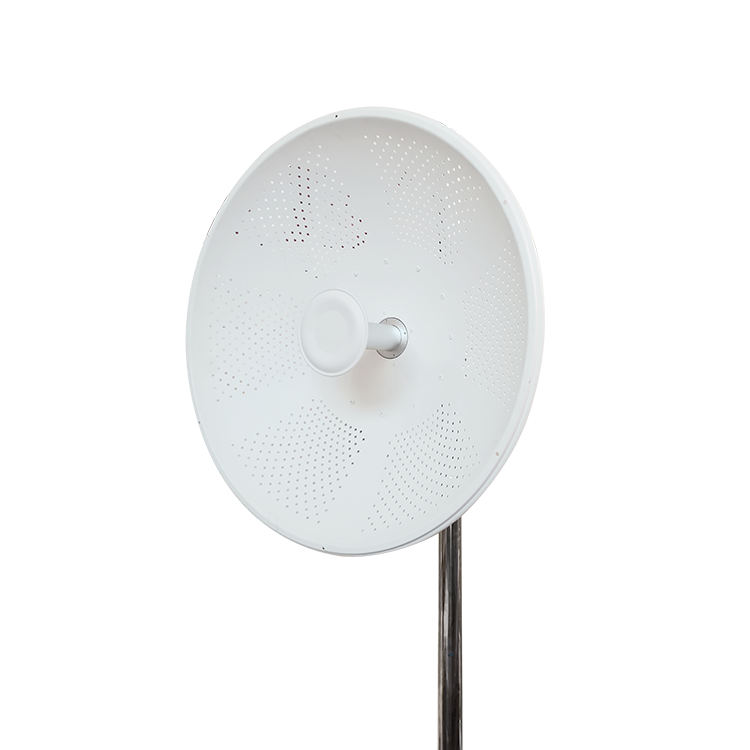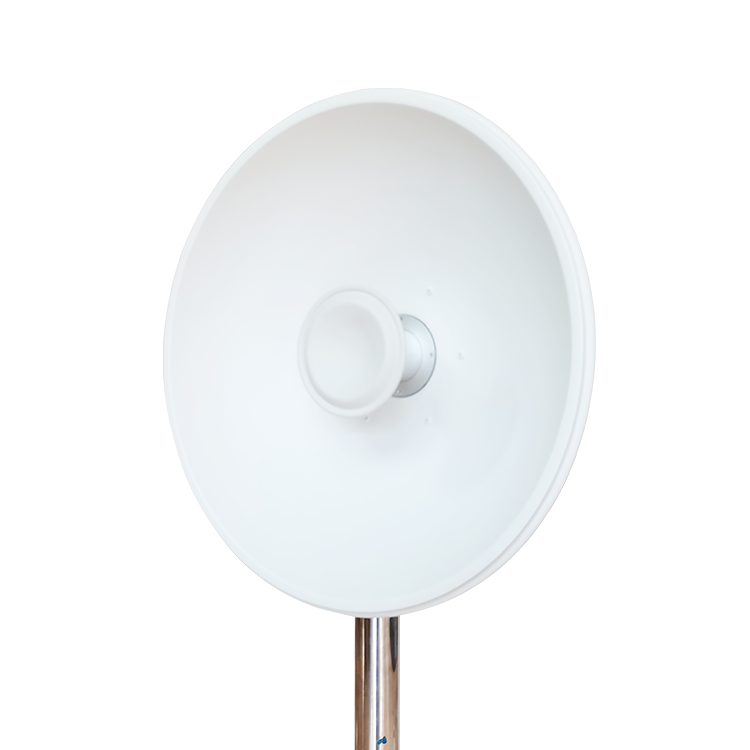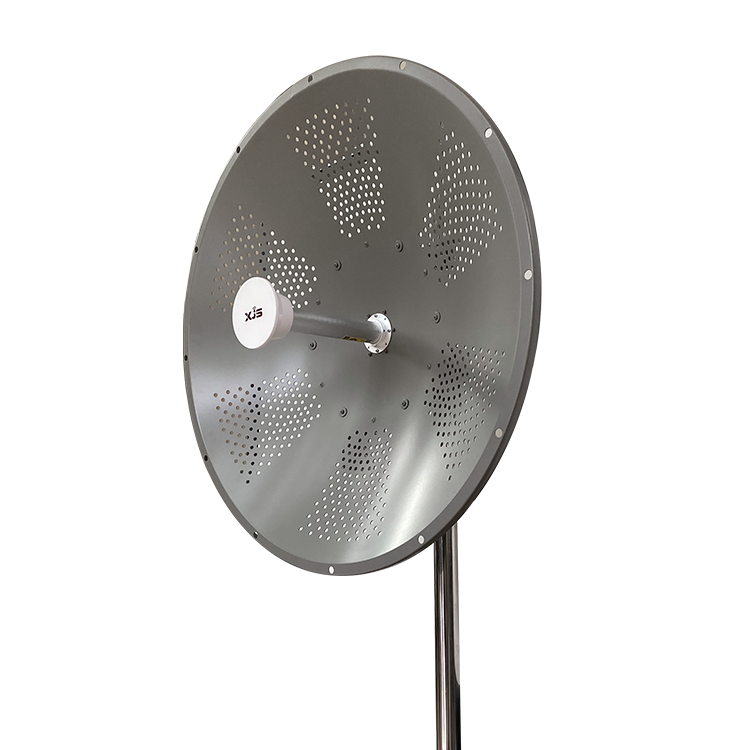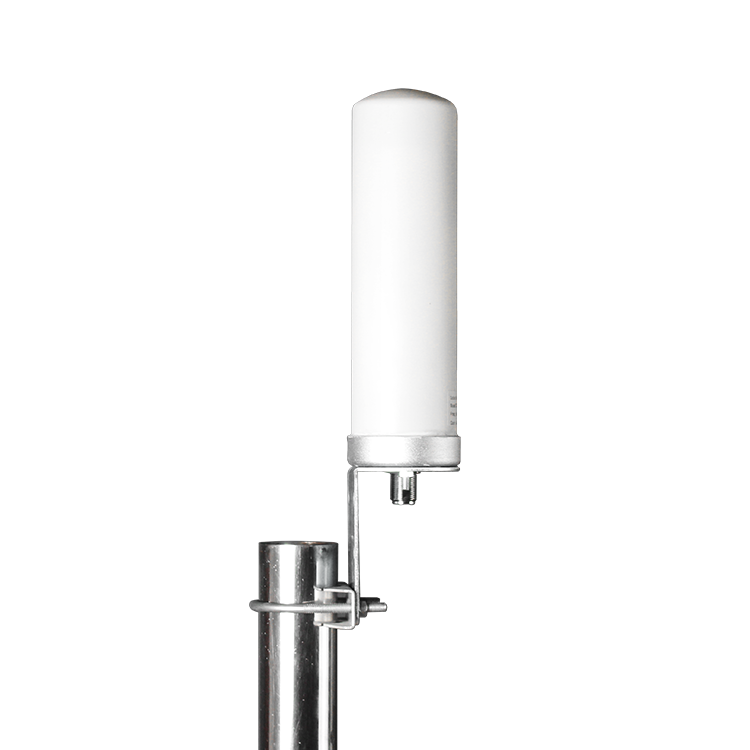With the rapid development of the Internet and information industry, communication equipment becomes more and more important. The dish antenna also plays a vital role in the communication industry. Then, the parabolic antenna is one of the most outstanding representations. Then, in this post, the author would guide you to explore the secrets of the parabolic antenna.
What is Parabolic Antenna?
A parabolic antenna, also known as a parabolic reflector or dish antenna, invented in 1887, is a type of antenna that uses a parabolic-shaped reflector to focus radio waves or electromagnetic signals. The shape of the reflector is typically a curved surface in the form of a paraboloid, resembling a dish or a bowl. It is mainly used in microwave, and satellite communications.
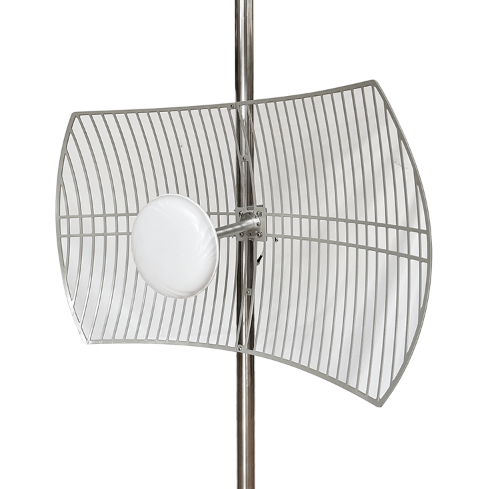
What is the Working Principle of a Parabolic Antenna?
As a communication product, the parabolic antenna has a simple working principle. The dish antenna working principle includes signal collection, signal focusing, signal amplification, directional communication, long-range communication, signal rejection, and beam steering. Then, it can operate the following procedures to achieve the communication goal.
●Signal Collection
The primary function of a parabolic antenna is to collect radio waves or electromagnetic signals from the surrounding environment. The curved parabolic reflector acts as a "dish" that captures incoming signals over a wide area.
●Signal Focusing
Once the signals are collected, the parabolic shape of the antenna focuses them toward a specific point called the focal point. The curved surface of the reflector reflects the incoming signals inward, causing them to converge at the focal point.
●Signal Amplification
The concentration of signals at the focal point enhances the antenna's gain, which is the measure of its ability to capture or radiate signals effectively. The larger the diameter of the parabolic reflector (known as the aperture), the higher the gain of the antenna.
●Directional Communication
Parabolic antennas have a directional radiation pattern, meaning they transmit or receive signals in a specific direction. By focusing the signals toward the focal point, parabolic antennas achieve high directivity, allowing for efficient communication over long distances.
●Long-Range Communication
Due to their high gain and directivity, parabolic antennas are ideal for long-range communication. They can transmit or receive signals over extended distances with minimal loss, making them suitable for applications such as satellite communications, wireless internet connections, and microwave links.
●Signal Rejection
Parabolic antennas are designed to reject signals coming from directions other than the desired one. The parabolic shape helps minimize interference from signals arriving at angles different from the focal point, improving the antenna's ability to isolate the desired signal.
●Beam Steering
In some advanced parabolic antennas, the focal point can be adjusted electronically or mechanically, allowing for beam steering. This feature enables the antenna to change its pointing direction without physically moving the entire dish, making it versatile for tracking moving satellites or targets.

Is A Parabolic Antenna Directional?
Yes, a parabolic antenna is directional. The parabolic shape of the antenna's reflector enables it to have a highly focused radiation pattern, which means that it transmits or receives signals in a specific direction. The curved surface of the reflector causes incoming signals to be reflected inward and converge at the focal point, resulting in a narrow beam width. As for the mimo parabolic dish antenna, it indicates that the uses multiple transmitters and receivers to transfer more data to multiple directions at the same time.
What Does A Parabolic Antenna Do?
Generally speaking, acting as a high-gain antenna for point-to-point communications, the parabolic antenna is commonly used for microwave relay links for transmitting telephone and TV signals between nearby cities, wireless WAN/LAN links for data communications, satellite communications, and spacecraft communications antennas.
How Far Can A Parabolic Antenna Reach?
It depends on what kind of model and brand you buy from. Also, the range of the parabolic antenna is almost determined by several factors, including the antenna's gain, frequency, power, and the characteristics of the environment in which it operates.
Where to buy Parabolic Antenna?
Then, you may wonder where can I buy a good and reliable parabolic antenna for my projects. XJS can be your good option. XJS is one of the most famous and trusted parabolic antenna manufacturers, owning an independent production line and R&D team. Therefore, we are able to produce a wide range of dish antennas such as 24dbi parabolic antenna, mimo parabolic dish antenna booster, 2.4 GHz parabolic dish antenna, etc.
Conclusion
All in all, parabolic antennas take a very important place in the current modern communication systems. Their ability to collect, focus, and transmit or receive signals makes them indispensable in various applications. The dish antenna working principle also makes good use of the modern communication technology.

